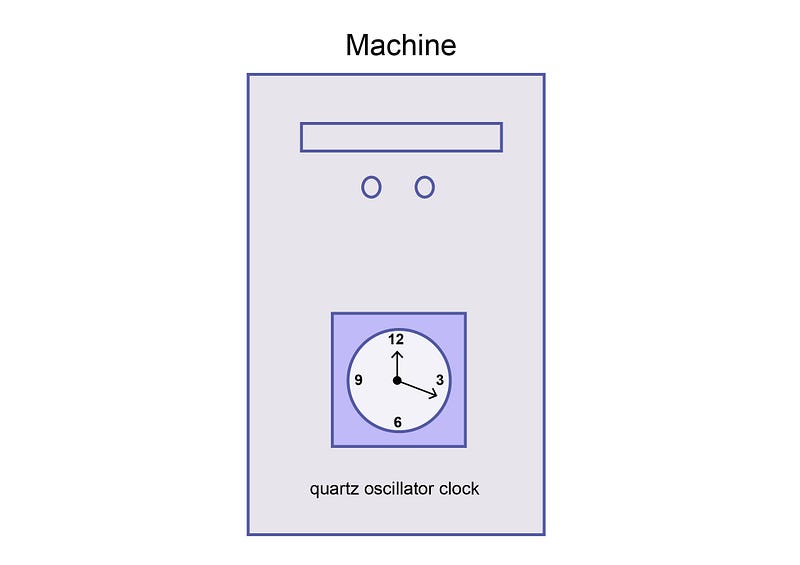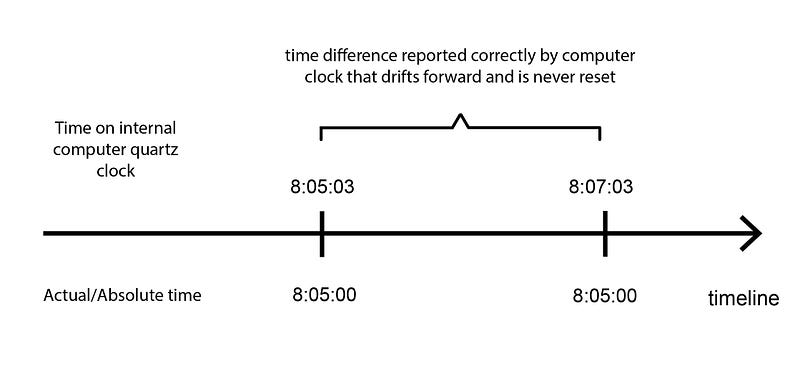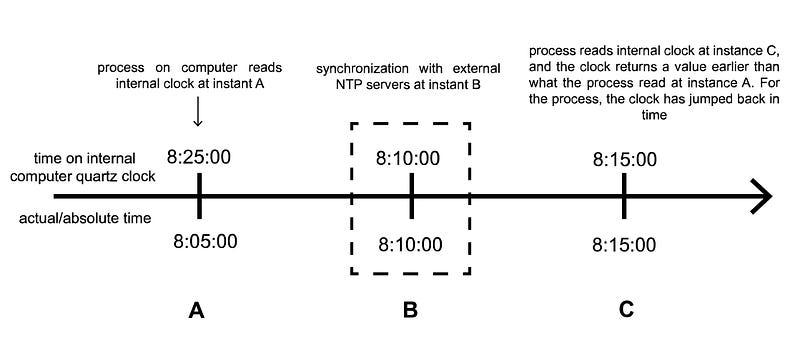Understanding Time Synchronization in Distributed Systems
Written on
Chapter 1: Introduction to Time in Distributed Systems
When operating on a single machine, timekeeping relies on that machine's internal clock, typically a quartz crystal oscillator.

If a machine's clock runs faster or slower than real time, measuring time intervals remains accurate, as this involves the difference between two time points (assuming the clock is never reset). However, pinpointing an exact moment—such as a timestamp—can be problematic if the internal clock isn't aligned with actual time. Nevertheless, if all events are timestamped without resetting the clock, a sequence of these events can still be determined.
If you’re preparing for interviews, consider enrolling in our top-rated Java Multithreading course.

In real-world applications, machines periodically sync their internal clocks with an external time source. The Network Time Protocol (NTP) aligns a machine's internal clock to the time provided by a network of servers, which in turn synchronize with a more reliable source like GPS. This synchronization complicates duration calculations and timestamp accuracy, particularly after a clock reset, when the internal clock may appear to jump forward or backward.

Chapter 2: The Complexity of Distributed Timekeeping
In distributed systems, the challenge of timekeeping grows even more intricate. Each node operates with its own clock, which may differ in speed compared to others.

Monotonic vs. Time of Day Clocks
As previously mentioned, if the internal clock is never reset or synchronized, it can reliably compute time durations by simply taking the difference between two timestamps. The specific absolute time of those timestamps is irrelevant. Such a clock is always incrementing and cannot jump backward or forward in time. It typically tracks elapsed time in nanoseconds since the machine's start.
For instance, Java’s System.nanoTime() is an example of a monotonic clock that continuously increases. Generally, monotonic clocks can measure intervals down to microseconds. In multi-core systems, each core might have its own monotonic clock, which may not be synchronized across all cores. The operating system must present a consistent view of time to all application threads running on different cores. While NTP cannot alter the monotonic clock's progression, it may adjust its frequency.
Elevate your prospects with the Grokking the Advanced System Design Interview course and secure that coveted position!
Conversely, systems also use a time of day clock, which indicates the absolute time at any moment. These clocks can jump forward or backward when synchronized with external servers via NTP.
For example, in Java, the following API returns values from the time of day clock:
- System.currentTimeMillis() returns the elapsed milliseconds since January 1, 1970, excluding leap seconds. Similarly, using the date command in a shell displays the current timestamp, which is another instance of a time of day clock.

Challenges in Synchronizing Time of Day Clocks
Achieving high precision in synchronizing time of day clocks with absolute time demands significant effort. Utilizing Precision Time Protocol (PTP) with GPS servers, alongside constant monitoring and adjustments, can bring a machine’s internal clock very close to the correct time. However, synchronizing time of day clocks using NTP can be fraught with difficulties, including:
- Firewalls or configuration errors blocking NTP traffic
- Misconfigured or inaccurate NTP servers
- Running multiple virtual machines on a single host, which may present the hardware clock as a virtual clock to each VM, resulting in clock jumps when VMs are rescheduled
- Situations where developers lack control over the system's clock, such as with mobile devices or embedded systems
- Network delays impacting synchronization accuracy, as the synchronization data is transmitted over the network
- Systems that may not account for leap seconds, potentially leading to malfunctions during leap second adjustments
- The inherent inaccuracies of quartz clocks, which can drift from absolute time due to temperature variations
In certain sectors, like financial services, there are legal obligations to maintain the accuracy of systems within a defined threshold relative to UTC.

Conclusion
Navigating the complexities of time synchronization in distributed systems is critical for maintaining system integrity and reliability. As technology evolves, so too must our understanding and implementation of effective timekeeping mechanisms.